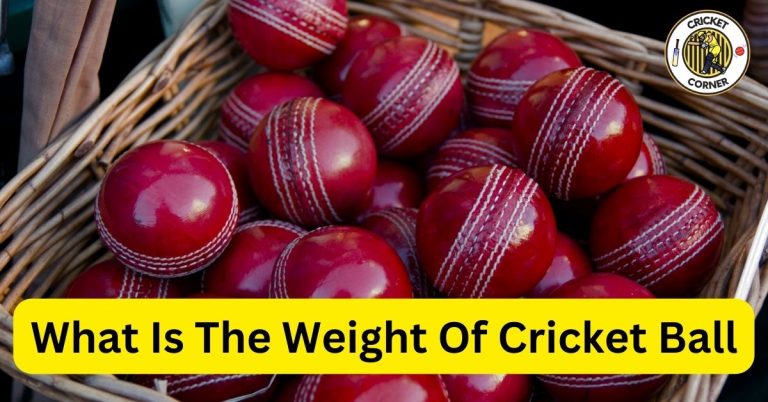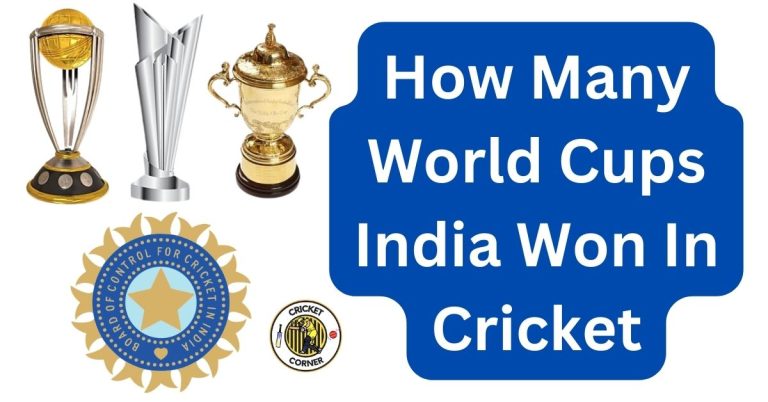What Is DLS Method In Cricket
Are you tired of being confused when your favorite cricket team’s match gets interrupted by rain? Do you find yourself scratching your head when the target score suddenly changes out of nowhere? Fear not, my friend, for we have the answer to your cricketing conundrum – the DLS method!
The Duckworth-Lewis-Stern method, or DLS for short, is a mathematical formula used to calculate target scores in limited-overs cricket matches affected by rain or other interruptions. Developed by two statisticians, Frank Duckworth and Tony Lewis, in the late 1990s, the DLS method has become a crucial tool for cricketing authorities in ensuring fair outcomes in matches that are subjected to the whims of Mother Nature.
But don’t worry, you don’t need a degree in mathematics to understand this method – we’ll break it down for you in simple terms.
The History of the DLS Method in Cricket
You’ll be interested to know that the DLS method in cricket, also known as the Duckworth-Lewis rule, was first introduced in international cricket in 1999. The reason for this was due to a controversial World Cup semi-final match that was decided by rain. The match was between South Africa and Sri Lanka, and the rain clouds hovered over the field at Kingsmead in Durban, South Africa.
Before the DLS method was introduced, teams had to complete a certain number of overs in a limited time frame to determine the winner. However, this method did not account for interruptions caused by rain, which could significantly affect the outcome of the match. So, in 1999, Frank Duckworth and Tony Lewis developed a new method that would take into account the number of overs played, runs scored, and wickets lost by the teams.
The DLS method has since been used in international cricket matches to provide a fair and accurate result, even in the event of weather interruptions. Today, the DLS method is widely accepted and used in cricket, and it has undoubtedly changed the way the game is played and the way results are determined, making it a valuable addition to the sport.
How the DLS Method Works
When rain interrupts a cricket match, it can be frustrating for both teams, but don’t worry, there’s a way to determine a winner using the DLS method in cricket. This method is named after its creators, Frank Duckworth and Tony Lewis.
The DLS method is actually an updated version of the Duckworth Lewis rule, which was introduced in 1997. So, how is the DLS method calculated?
When a match is interrupted by rain, the umpires will take note of the number of overs that have been played and the number of wickets lost by each team. This information is then entered into a computer program, which calculates the target score for the team batting second.
The target score is adjusted based on the number of overs that have been lost due to rain. The DLS method is a complex algorithm that takes into account many factors, including the current score, number of wickets lost, and overs played.
It’s designed to be fair to both teams, even if the match is interrupted by rain. So, the next time you’re watching a cricket match and it starts to rain, don’t worry. The DLS method has got you covered.
Factors Considered in Calculating the Target Score
If you’re a cricket fan, you might be curious about what factors are taken into account when calculating the target score in case of a rain interruption. The DLS method in cricket uses a complex formula that considers several factors to determine the target score.
These factors include the number of wickets lost, the number of overs left, and the current run rate at the time of the interruption. But how is the DLS method calculated? Well, it involves a bit of math, so hold on to your hats!
The DLS method formula takes into account the par score, which is the score that a team is expected to reach at a specific point in time. This par score is determined based on a combination of historical data and the current match situation. The DLS method then calculates the team’s score based on the number of overs left and the number of wickets lost, adjusting for the rain interruption.
So, the next time you’re watching a cricket match and the rain starts pouring down, you’ll have a better understanding of how the DLS method comes into play. Remember, it’s not just about the number of overs left or the number of wickets lost – the DLS method in cricket takes into account a range of complex factors to determine the target score.
So, sit back, relax, and enjoy the game – even if it means doing a bit of mental math!
Controversies Surrounding the DLS Method
Controversies have arisen in cricket over the fairness of the system used to determine target scores in rain-affected matches. The DLS method in cricket calculation has been the subject of much debate, with some players and fans arguing that it’s too complex and prone to errors.
One of the main criticisms of the DLS method is that it takes into account the number of wickets lost by each team, which some argue is not a fair reflection of the match situation. Another issue with the DLS method is that it can lead to some strange and unexpected outcomes. For example, a team that is ahead by a large margin when rain stops play may end up losing the match under the DLS method if they have lost more wickets than their opponents.
This has led to accusations that the DLS method is unfair and that it often produces results that are not reflective of the actual match situation. Despite these controversies, the DLS method remains the most widely used system for calculating target scores in rain-affected matches. While there have been calls for a more simple and transparent system, it’s unlikely that the DLS method will be replaced anytime soon.
As such, cricket fans will have to continue to grapple with the complexities of the DLS method and its impact on the sport.
Future Developments and Alternatives to the DLS Method in Cricket
You might be surprised to learn that there are some alternative methods being developed to calculate target scores in rain-affected cricket matches, which could potentially replace the DLS method in the future.
One such method is the VJD method, which has been designed by an Indian statistician. This method takes into account the number of wickets lost by the team batting first, as well as the number of overs they have faced, to calculate a revised target score for the team batting second.
Another alternative to the DLS method is the ‘WinViz’ method, which has been developed by ESPNcricinfo. This method uses complex algorithms to simulate the remainder of the match, taking into account the current score, the players on the field, and the conditions. It then calculates the probability of each team winning the match, and sets a target score accordingly.
While this method is still in its experimental phase, it has the potential to provide a more accurate and fairer system for calculating target scores in rain-affected matches.
Despite the development of these new methods, the DLS method remains the most widely used system for calculating target scores in cricket. However, with the increasing use of technology and data analytics, it’s likely that we’ll see more alternatives being developed in the future.
While it may take some time for these new methods to be adopted by cricketing boards around the world, they could potentially provide a fairer and more accurate system for calculating target scores in rain-affected matches.
Conclusion
Well done! You’ve learned about the DLS method in cricket.
As you now know, the DLS method was introduced to replace the outdated and unfair method of calculating target scores in rain-affected matches. It takes into account various factors such as the number of overs played, wickets lost, and run rate, to determine a revised target score for the team batting second.
Although there have been controversies surrounding the DLS method, it remains an essential tool in modern cricket. With the ever-changing weather patterns and the increasing popularity of T20 cricket, the DLS method continues to evolve to provide more accurate results.
So, the next time you’re watching a cricket match and it starts raining, don’t worry, the DLS method has got you covered! After all, it’s better to be safe than sorry, right?





